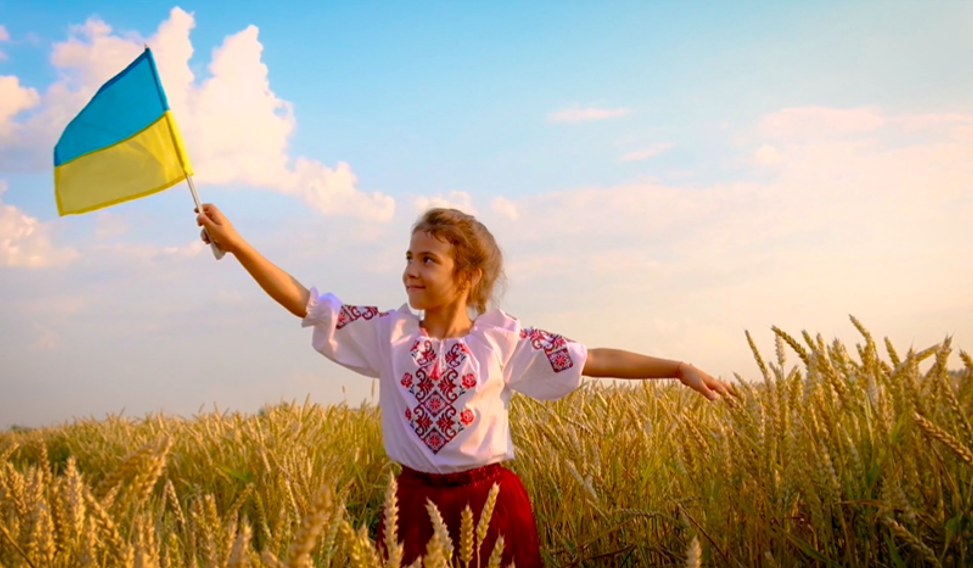Children caught in a war zone like Ukraine may experience or witness horrible events, including death, injury, bombing, food insecurity, violence, urgent relocation, and separation from family, friends, and loved ones.
We’d like to thank Drs. Daniel Chorney, Maureen Whittal, and Lynn Miller, and Carmen McLean, all members of our Scientific Advisory Committee, for preparing this Anxiety Canada resource. Special thanks to Victoria Datsko, Dana Koren Lupynis, and Maria Datsko for their volunteer translation services.
To download this article in PDF format in English or Ukrainian, click below or see our Free Downloadable PDF Resources page.
Children caught in a war zone may experience or witness horrible events, including death, injury, bombing, food insecurity, violence, urgent relocation, and separation from family, friends, and loved ones.
These frightening events can cause a range of responses. Some are normal and expected, especially right after an upsetting event. If these responses continue beyond a month, it may be a sign of a child needing more help.
Signs of Traumatic Stress to Watch for in Children
- Trouble sleeping and upsetting dreams or nightmares
- Having big reactions when reminded of the event(s) — sometimes triggers can be obvious (e.g., a loud noise like the sound of a bomb) and sometimes it will not be clear (e.g., smelling something that is a reminder)
- Not wanting to talk about the event(s)
- Avoiding things that remind them of the event(s)
- Not showing interest in things they used to enjoy
- Being overly watchful for possible danger
- Being easily startled or jumpy
- Acting irritable or being aggressive
- Having difficulty paying attention or concentrating
Some children may experience all of the signs above and some may only experience a few. You may notice other reactions, such as the child expressing anger, guilt, or shame. They may blame themselves or someone close to them for what happened (e.g., blaming their parent for the war). Kids and teens may also act differently than they used to (e.g., more impulsively) or much younger than their current age (e.g., wetting the bed, sucking thumb). Physical symptoms like headaches or stomachaches are also common.

Strategies for Helping Children Exposed to War or Other Traumatic Events
- Safety first. The suggestions below are useful only if everyone is safe and secure from physical harm. If you are struggling to meet basic needs (e.g., obtaining shelter, food, adequate sleep, and safety), your basic needs must be the priority.
- Explain that these reactions are normal. Help kids know that their feelings — worry, sadness, anger, confusion, or whatever it is they are feeling — are normal and understandable given what they’ve been dealing with. Many children hide how they are feeling because they worry that they are the only ones who feel this way. If you are feeling anxious, it’s okay to tell them you’re feeling anxious. Tell them how you feel, ask them how they feel, with the understanding that it’s okay to feel that way.
- Remember that more than one person in the family may be struggling. Consider having all members of a family who experienced a traumatic event, including those who heard about the events from survivors, be assessed and treated for their symptoms. People who hear about an upsetting or shocking event can also have a traumatic response.
- Teach yourself and your child about trauma reactions. Help children learn trauma reminders cause their big feelings and then help them understand that these feelings are a response to whatever ‘bad thing’ happened in their life. Things that serve as reminders or “triggers” can come from any of our five senses (e.g., sight – seeing someone who is injured; sound – loud noises; taste – eating a food that they were eating at the time of the upsetting event; touch – someone coming up from behind; smell – burning) or anything that reminds us of the event (e.g., the time of day it occurred, the date on the calendar, revisiting the location of the event(s)). Recognizing triggers and the response it produces can help a child feel less confused about what is happening. It can also add an increased sense of control and predictability to their lives. It also helps children learn that their thoughts and their feelings are connected.
- Help your child cope with trauma reactions. Knowing the things (e.g., people, places, situations, sights, smells, memories, internal sensations) that can trigger big reactions will help you and your child plan for and practice using healthy coping strategies. Children can develop unhealthy strategies, including not expressing how they feel, distancing themselves, or even denying negative feelings as a way to protect themselves from emotional pain.
- Parents can help by encouraging children to become more comfortable with their big feelings/emotions — even tough emotions like fear, anger, and sadness — slowly at first and then encouraging more over time once a child develops more ‘tools’ to help manage emotions. Examples include using positive self-talk statements like “I can get through this,” or “Things are hard now, but they will get better.” Use what works for you and your family. The idea is to not allow negative thoughts and feelings to overwhelm your child. Even though emotions can be big and intense, they do go away — just like surfing a wave, think of the goal as helping your child to surf the waves of their emotions.
- Praise behaviours you want to see more of. Some children who have experienced trauma will react with negative behaviours — not listening to parents, not following rules, or behaving poorly towards others. Over time this can damage a parent-child relationship and the child’s relationships with others, so it is important to dedicate a portion of each day to daily “time-in” sessions. Praise behaviours you want to see more of (e.g., kindness, managing of emotions, cooperation) and remove attention if a child misbehaves. If a child is acting out aggressively, make this a priority and praise any opportunity you can when you see a child be gentle with themselves or others. Try to pick one or two things to focus on at any given time and be specific: “I love it when you are gentle with your sister” or “You’re doing a great job keeping your hands to yourself!” as examples if your child is displaying aggressive behaviour. Focus on the positive and ignore negative behaviours.
- Help kids relax. When people experience a traumatic event, a number of changes can happen to their brain and body. Kids can feel constantly tense, and our brain can start to ‘overreact’ to things that it thinks are dangerous, even if that thing is not actually dangerous.
- Help children calm their bodies by slowing their breathing, tensing, and relaxing different muscle groups, or just by being active and doing something other than allowing their emotions to overwhelm them. Some children or teens may feel like doing something silly (e.g., dancing, singing) whereas others may choose a calm or relaxing activity like reading or drawing. Whatever they choose, help your child use that calming strategy whenever they notice their body getting tense or stressed so they learn how to calm down before it becomes unmanageable or overwhelming.
- Help kids gradually approach things that remind them of the trauma. Parents and children can work together to approach things (e.g., memories, safe situations) that remind them of the trauma. One example of this is through writing about or talking about what happened, where a child is encouraged to write out or describe what happened before, during, and after the traumatic event, as well as their thoughts and feelings during the event. This can help kids make sense of what happened and what it means. Another example is helping your child approach safe situations that remind them of the trauma or that have made them nervous since the trauma. This gives them a chance to surf the wave of big feelings and, with repeated practice, feel more comfortable doing things and going places that are safe. Approaching trauma reminders can feel scary, so kids may need lots of support and encouragement.
- It’s important to never force your child to approach trauma reminders before they are ready. You can start with easier situations and work up to more challenging ones as your child builds confidence.
Seek professional help when needed. Many people recover from trauma on their own without professional help. However, professional help can be useful, especially if the signs of traumatic stress aren’t going away after a month. If you or your family are struggling with the impact of a traumatic event, consider seeking help for all family members, including those who heard about the events from survivors.
To download this article in PDF format in English or Ukrainian, click below or see our Free Downloadable PDF Resources page.
This Anxiety Canada resource was prepared by Drs. Daniel Chorney, Maureen Whittal, Lynn Miller and Carmen McLean, all members of the Scientific Advisory Committee. Volunteer translation services were provided by Victoria Datsko, Dana Koren Lupynis, and Maria Datsko.
